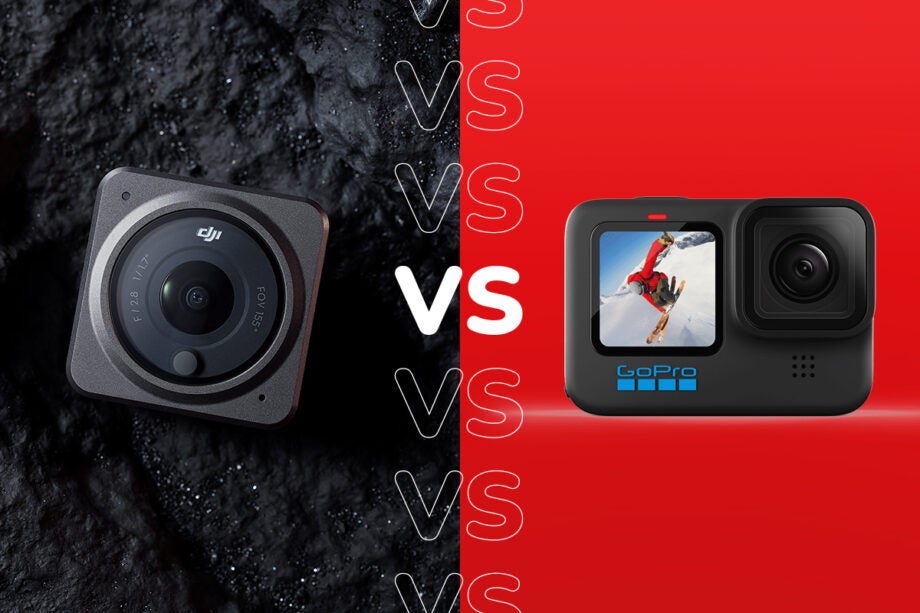DJI Action 2 vs GoPro Hero 10 Black: how do the action cameras compare?

DJI has finally unveiled its second fully-fledged action camera, the DJI Action 2, but how does it compare with the GoPro Hero 10 Black? Let’s take a look.
Even though its updates might be more iterative than what we’ve been used to in previous years, the GoPro Hero 10 Black still sits as the most fully-featured action camera you can buy right now, but with the release of the DJI Action 2, there might be enough on this new contender to turn some heads away from GoPro’s flagship.
While they’re aimed at the same target market, the DJI Action 2 and the GoPro Hero 10 go about their business very differently, and there’s a case to made that each camera will work better for different types of filmmakers. These are the key points of comparison you need to know when weighing up the DJI Action 2 against the GoPro Hero 10.
Design
GoPro cameras have remained recognisable in the wild because they’ve largely adhered to the same design for several years, with the major innovation being the front-facing display introduced on the GoPro Hero 9. The Hero 10 is almost identical to the 9, with a large touchscreen on the back and the sensor being housed in the top left-hand side of the chassis. It’s very much the archetypal action camera design, and also very similar to the original DJI Osmo Action.
The DJI Action 2 on the other hand has gone in a completely different direction by opting for a modular square design. The camera’s front-facing portion is all sensor, while a screen adorns the rear. Its small stature results in a low weight of just 56 grams, making it lighter than the 153 grams of the GoPro Hero 10. It might not sound like much, but this weight difference could have an impact if you’re filming for long periods of time with your arm extended.
Video quality
With more tech crammed into its larger chassis, the GoPro Hero 10 is able to shoot footage at up to 5.3K 60fps, and 4K 120fps. The DJI Action 2 on the other hand caps out at 4K 120fps, making the GoPro the camera of choice if you’re buying on video quality alone.
Both cameras have similar slow-motion capabilities, such as 4x 4K and 8x when shooting in 1080p. Again, the GoPro wins out here slightly by being able to capture 2x slow-mo in the full 5.3K mode.
Features and accessories
Ever since the Hero 9, GoPro has been keen to highlight the various mods that can be bought for its cameras, including a mountable fill light and a two-way mic with a wind breaker. With all of the mods added however, the GoPro Hero 10 does look like its been bombarded with accessories – the DJI Action 2 on the other hand has been designed specifically with mods in mind.
A small magnetic strip along the bottom of the Action 2 allows modules to be swapped in and out quickly, such as the touchscreen module for vlogging, and the power module for extended battery life. Just as with the Hero 10, there are various mounts also available for the Action 2, such as head and chest mounts for POV shots.
Unlike its predecessor, the DJI Action 2 now supports livestreaming at up to 1080p 30fps – a feature that has already been available on GoPro cameras for quite some time.
Price
In spite of all the aforementioned features, sometimes a buying decision can come down to nothing more than the price, and in this category the DJI Action 2 is a bit friendlier on the wallet. There are two options available, the Power Combo which includes the camera and the power module for £349/€399, and the Dual-Screen Combo which swaps out the power module for the touchscreen module, at a higher price of £455/€519.
On its own the GoPro Hero 10 Black rings in at £479.99, making it the more expensive device, but it can be had for the lesser rate of £379.98 when you also sign up for the GoPro Subscription service, which includes automatic uploads and cloud backups of your footage.


